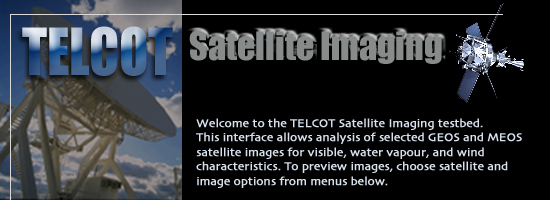
– beta 3.0 –
 |
– beta 3.0 –
|
 |
 |
GEOS East GOES satellites provide the kind of continuous monitoring necessary for intensive data analysis. They circle the Earth in a geosynchronous orbit, which means they orbit the equatorial plane of the Earth at a speed matching the Earth's rotation. This allows them to hover continuously over one position on the surface. The geosynchronous plane is about 35,800 km (22,300 miles) above the Earth, high enough to allow the satellites a full-disc view of the Earth. Because they stay above a fixed spot on the surface, they provide a constant vigil for the atmospheric "triggers" for severe weather conditions such as tornadoes, flash floods, hail storms, and hurricanes. When these conditions develop the GOES satellites are able to monitor storm development and track their movements. Below is the Orbital Information for the eastern USA GEOS satellite (as provided by SOCC navigation):
GEOSEast images used here are intended for educational
and demonstration purposes only; no ownership is implied in their use. |
||||
 |
||||||
satChat |